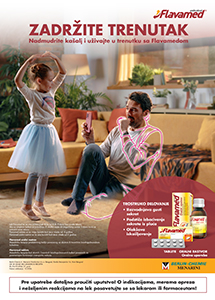SYMPTOMS AND TREATMENT OF CHILDREN WITH AUTISM SPECTRUM DISORDERS: INATTENTION, HYPERACTIVITY AND IMPULSIVITY
Keywords:
autism, hyperactivity, inattention, irritability, childrenAbstract
Introduction: Symptoms usually associated with attention deficit hyperactivity disorder and ADHD can occur in autism.Pharmacotherapy can reduce hyperactivity, impulsivity and inattention and improve functionality in the social, academic and work environment.Symptoms of attention deficit / hyperactivity disorder (ADHD) are present in young people with ASD (autism spectrum disorder) and lead to significant functional impairment. Methylphenidate has been shown to be effective in reducing hyperactivity; however, the magnitude of the effect in children with ASD is generally lower, and the rates of side effects are higher than in typically developing young people. Surprisingly, there is little data on the use of amphetamines in young people with ASD. Prolonged release of guanfacine has been shown to be effective in the treatment of comorbid ADHD. Studies evaluating the effect of clonidine are generally small, but overall show some benefit. Of the various psychostimulants for ADHD, only rapid-release methylphenidate has been studied more in autism.Non-stimulants approved in the United States for the treatment of ADHD are atomoxetine and alpha 2 adrenogenic agonists, clonidine and guanfacine. There are only a few studies that have included these drugs and which are smaller and uncontrolled.Antipsychotic drugs are effective in reducing hyperactivity in autism. However, due to their profile of side effects.their use should be limited to cases where irritability, aggression and self-harm are also present.
Conclusion: This paper presents an overview of research on the pharmacotherapy of symptoms of inattention, hyperactivity and irritability.
References
Murray MJ. Attention-deficit hyperactivity disorder in the context of autism spectrum disorders. Current Psychiatry Rep 2010; 12(5): 382-388.
Lazarević M, Jovović S. Working styles of medicine professionals in emergency medical service. Opšta medicina 2015; 21(3-4): 106-112.
Quintana H, Birmaher B, Stedge D et al. Use of methylphenidate in the treatment of children with autistic disorder. Autism Dev Disord 1995; 25(3): 283-294.
Troost PW, Steenhuis MP, Tuynman-Qua H.G et al. Atomoxetine for attention-deficit/hyperactivity disorder symptoms in children with pervasive developmental disorders: a pilot study. Child Adolesc Psychopharmacol 2006; 16(5): 6116-6119.
Posey D., Wiegand RE, Wilkerson J et al. Open-label atomoxetine for attention-deficit/hyperactivity disorder symptoms associated with high-functioning pervasive developmental disorders. Child Adolesc Psychopharmacol 2006; 16(5): 599-610.
Zeiner P, Gjevik E, Weidle B. . Response to atomoxetine in boys with high-functioning autism spectrum disorders and attention deficit/hyperactivity disorder. Acta Paediatr 2011; 100(9): 1258-1261.
Arnold LE, Aman MG, Cook AM et al. Atomoxetine for hyperactivity in autism spectrum disorders: placebo-controlled crossover pilot trial. J Am Acad Child Adolesc Psychiatry 2006;45(10): 1196-1205.
Fankhauser MP, Karumanchi VC, German ML et al. A double-blind, placebo-controlled study of the efficacy of transdermal clonidine in autism. Clin Psychiatry 1992; 53(3): 77-82.
Jaselskis CA, Cook Jr, Fletcher KE, et al. Clonidine treatment of hyperactive and impulsive children with autistic disorder. Clin Psychopharmacol 1992;5: 322-327.
Posey DJ, Puntney JI, Sasher TM, et al. Guanfacine treatment of hyperactivity and inattention in pervasive developmental disorders: a retrospective analysis of 80 cases. Child Adolesc Psychopharmacol 2004; 14(2): 233-241.
Scahill L, Aman MG, McDougle CJ, et al. A prospective open trial of guanfacine in children with pervasive developmental disorders. Child Adolesc Psychopharmacol 2006; 16(5): 589-598.
Handen BL, Sahl R, Hardan AY. Guanfacine in children with autism and/or intellectual disabilities. Dev Behav Pediatr 2008; 29(4): 303-308.
Hajizadeh-Zaker R, Ghajar A, Mesgarpour B, Afarideh M, Mohammadi M, Akhondzadeh S. l-Carnosine as an adjunctive therapy to risperidone in children with autistic disorder: A randomized, double-blind, placebo-controlled trial. Journal of child and adolescent psychopharmacology 2018; 28(1): 74-81.
Kim HW, Park EJ, Kim JH, Boon-Yasidhi V, Tarugsa J, Reyes A, Joung YS. Aripiprazole for irritability in asian children and adolescents with autistic disorder: A 12-week, multinational, multicenter, prospective open-label study. Journal of child and adolescent psychopharmacology 2018; 28(6): 402-408.
Nikvarz N, Alaghband-Rad J, Tehrani-Doost M, Alimadadi A, Ghaeli P. Comparing efficacy and side effects of memantine vs. risperidone in the treatment of autistic disorder. Pharmacopsychiatry 2017; 50(01): 19-25.
Wasdell MB, Jan JE, Bomben MM et al.A randomized, placebo-controlled trial of controlled release melatonin treatment of delayed sleep phase syndrome and impaired sleep maintenance in children with neurodevelopmental disabilities. Pineal Res 2008; 44(1): 57-64.
Wirojanan J, Jacquemon S, Diaz R et al. The efficacy of melatonin for sleep problems in children with autism, fragile X syndrome, or autism and fragile X syndrome. Clin Sleep Med 2008; 5: 145-150.
Wright B, Sims D, Smart S, et al. Melatonin versus placebo in children with autism spectrum conditions and severe sleep problems not amenable to behaviour management strategies: a randomized controlled crossover trial. Autism Dev Disord 2011; 41(2): 175-184.
Ming X, Gordon, Kang N et al. Use of clonidine in children with autism spectrum disorders. Brain Dev 2008; 30 (7): 454-460.
Hollway JA, Aman MG. Sleep correlates of pervasive developmental disorders: a review of the literature. Res Dev Disabil 2011; 32: 1399-1421.





